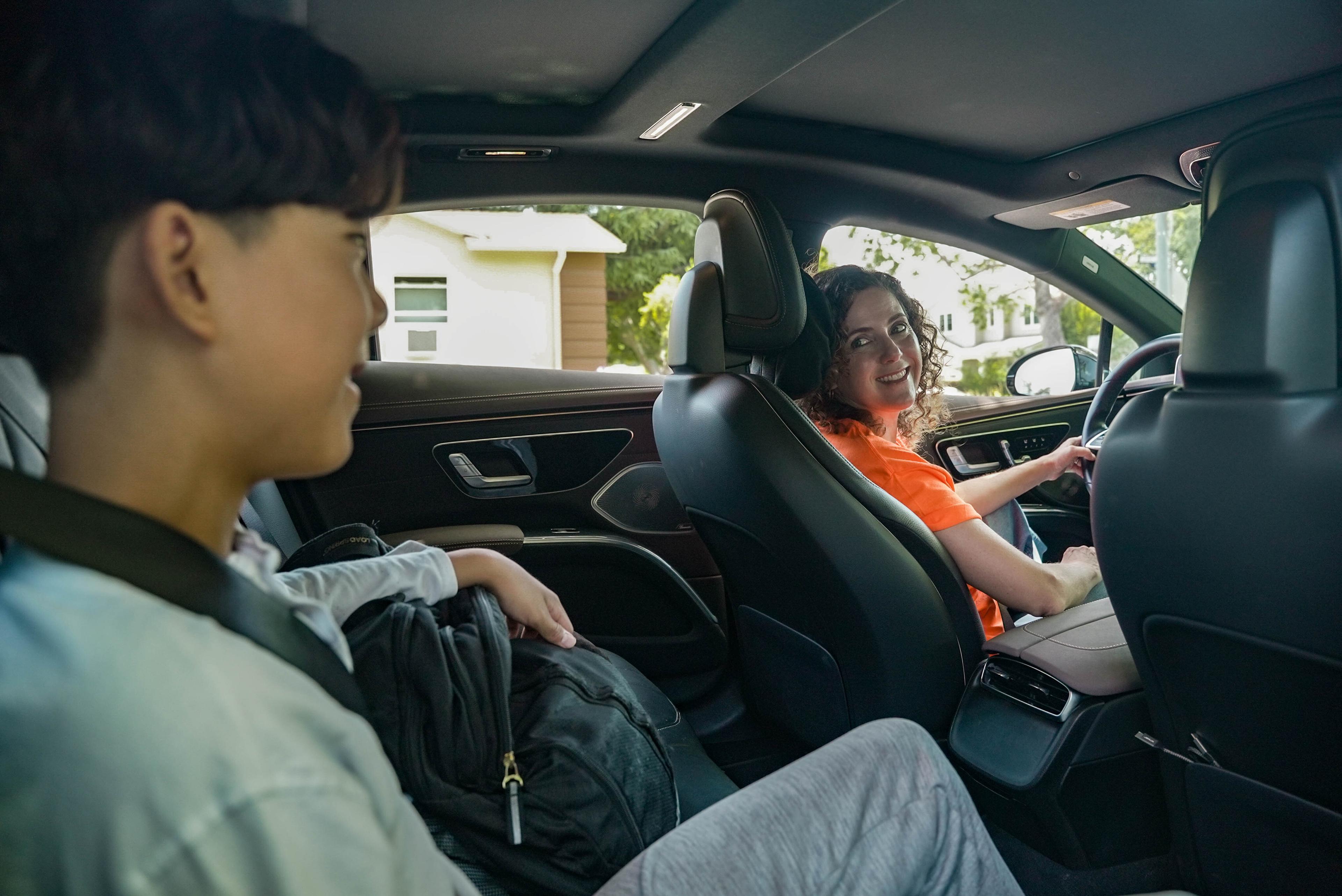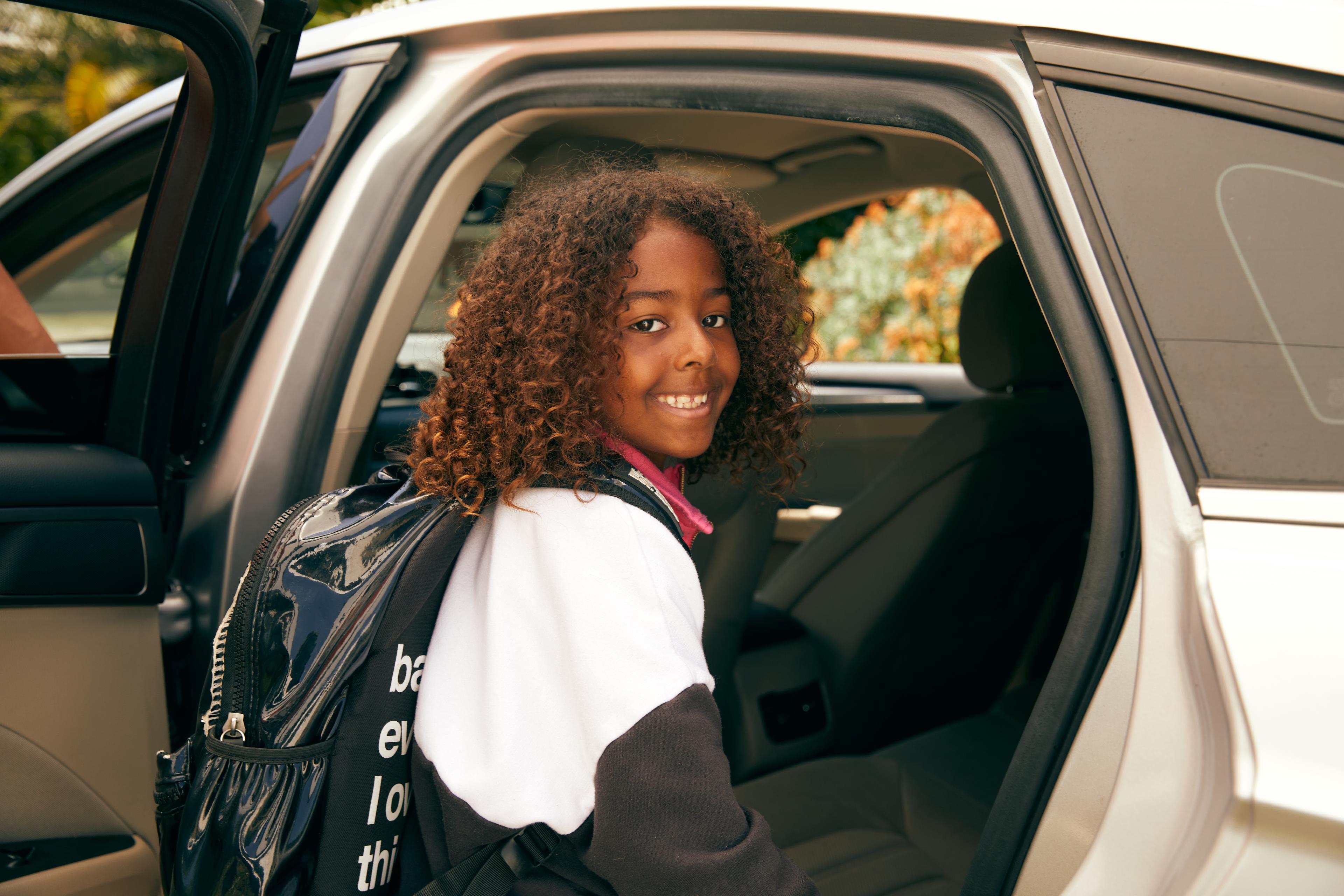Reliable IEP Rides for San Diego Schools

For San Diego-area students with Individualized Education Programs (IEPs), safe and reliable transportation is essential for accessing their education. Having a dependable, trustworthy transportation option — ideally one that can be customized to meet the individual requirements of students with disabilities — can help to ensure they receive the support they need and deserve on their way to school.
In a survey of parents and caregivers of children with IEPs, 65% said it was extremely or very important that their school provides individual transportation for their child, with features designed for students with disabilities or IEPs. HopSkipDrive, which has partnered with 10,000 schools and over 600 school districts nationwide, understands the unique needs of these students. We have enabled hundreds of thousands of rides for students with disabilities, and we are committed to delivering new products and services to meet their unique needs.
Read on to learn more about how students with IEPs in San Diego can benefit from the individualized, consistent experience HopSkipDrive offers as they travel to school, home, and support services.
Ensuring Access for San Diego IEP Students
Like other districts around the country, San Diego school districts are grappling with transportation challenges that significantly impact all students, but especially those with special needs. The ongoing school bus driver shortage has resulted in late buses and canceled routes, leaving many parents to take on the responsibility of getting their kids to and from school themselves.
In fact, one father in San Diego with five children — three of whom have special needs — became a school bus driver so his kids would have a consistent daily commute. Students with special needs may require up to 45 minutes to refocus after stressful transportation experiences, which makes a safe and consistent ride an absolute necessity.
Solutions Designed Specifically for IEP Transportation Needs
Our flexible and adaptive platform goes beyond providing a consistent ride experience, offering additional features tailored to the specific needs of students with disabilities and IEPs. These features help ensure that every student feels comfortable and supported throughout their journey.
Customized IEP Rider Experience
To ensure each student’s needs and preferences are met, we offer enhanced onboarding and support for parents and caregivers of students with disabilities, with a direct line to the HopSkipDrive team. This gives them the opportunity to discuss specific requirements and customize the ride experience before the first ride, providing assurance that their rider will feel comfortable and secure from the start.
Experienced Caregiving Professionals
At the heart of HopSkipDrive is a network of CareDrivers who each have caregiving experience with children — a requirement that guarantees they bring valuable skills in child development, behavioral understanding, and patient communication to each ride. In addition, CareDrivers must pass an in-depth, 15-point certification process that includes rigorous background checks before they can gain access to the HopSkipDrive platform.
“It has been so special to connect with my repeat riders and really get to know them and their families and teachers. It has made me feel like a valued member of a team! I love to find new ways to send the kids to school with an extra boost of confidence and a smile!”
— Michelle E., CareDriver in San Diego
Familiarity That Builds Trust
HopSkipDrive’s Primary CareDriver + Program prioritizes consistency and trust by matching students with the same trusted CareDriver for a minimum of 80% of a rider’s rides. This approach fosters a sense of familiarity and routine, which is especially crucial for students who may find changes in their routine challenging or unsettling.
Wheelchair-Accessible Vehicle (WAV) Rides
Wheelchair-accessible transportation is now available throughout San Diego, ensuring students with mobility requirements can access reliable school transportation. These specialized services connect through our CarePartners™ program, uniting schools with professionals trained specifically in supporting students with mobility needs.
Safety-Focused Technology That Keeps Everyone Connected
HopSkipDrive’s RideIQ® ride management platform makes it easy for San Diego schools to schedule and track rides, and get data-driven insights. In addition, our Safe Ride Technology™ enables communication, visibility into who the driver is, and real-time ride tracking for everyone involved in a student’s journey.
Meeting and Exceeding California’s Safety Standards
School districts in San Diego should rest assured that HopSkipDrive meets all requirements of California’s SB 88 legislation for student transportation safety. In fact, HopSkipDrive’s safety standards exceed SB 88 mandates in key areas:
Background Checks: Our 15-point CareDriver certification process includes FBI fingerprinting, a search of the California Child Abuse Central Index via the TrustLine registry, and thorough criminal/watchlist screenings, surpassing basic requirements.
Driver Experience: We require CareDrivers to be at least 21 years old — which is significantly higher than the age 18 minimum — and we also require five years of caregiving and a minimum of three years of driving experience.
Vehicle Requirements: Our proactive vehicle safety measures means we maintain a maximum vehicle age of 13 years (or less, based on local regulations). We also provide prompt recall alerts, exceeding state regulations.
Our commitment to safety and compliance means that San Diego schools can have confidence that a transportation partnership with HopSkipDrive will meet all state requirements while providing students with the highest level of care.
A Trusted Student IEP Transportation Partner for San Diego Schools
HopSkipDrive has completed more than 5 million rides over 95 million safe miles for students across the country. In 2024, 99.697% of HopSkipDrive rides were completed without a safety incident of any kind. San Diego schools facing critical transportation decisions should consider HopSkipDrive’s proven track record when choosing a transportation partner.
What matters most is that students with IEPs get to school safely, consistently, and in the right frame of mind to learn. HopSkipDrive’s specialized approach helps districts meet their legal obligations while giving families peace of mind that their children are in good hands.
Ready to see how HopSkipDrive can solve your district’s IEP transportation challenges?


